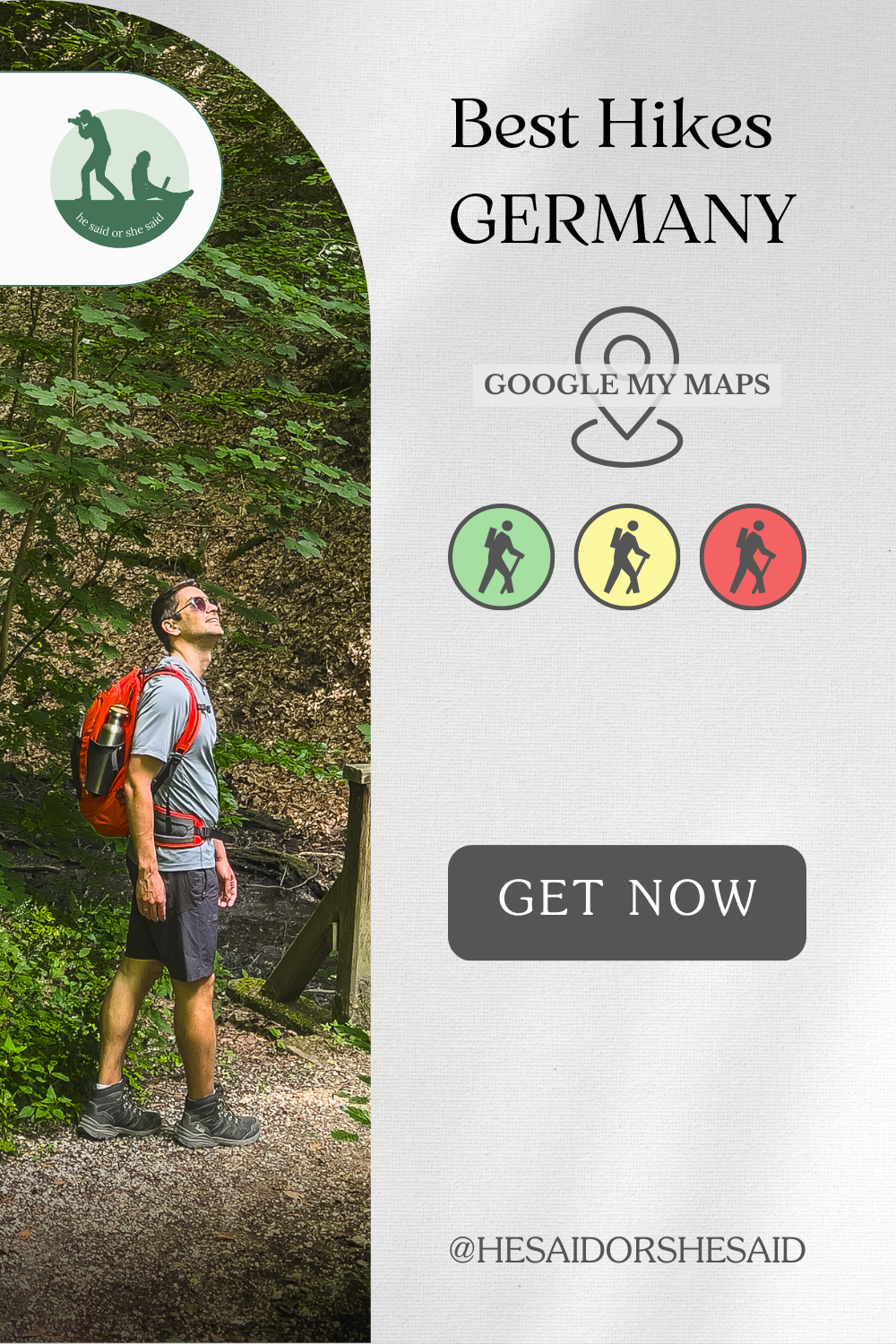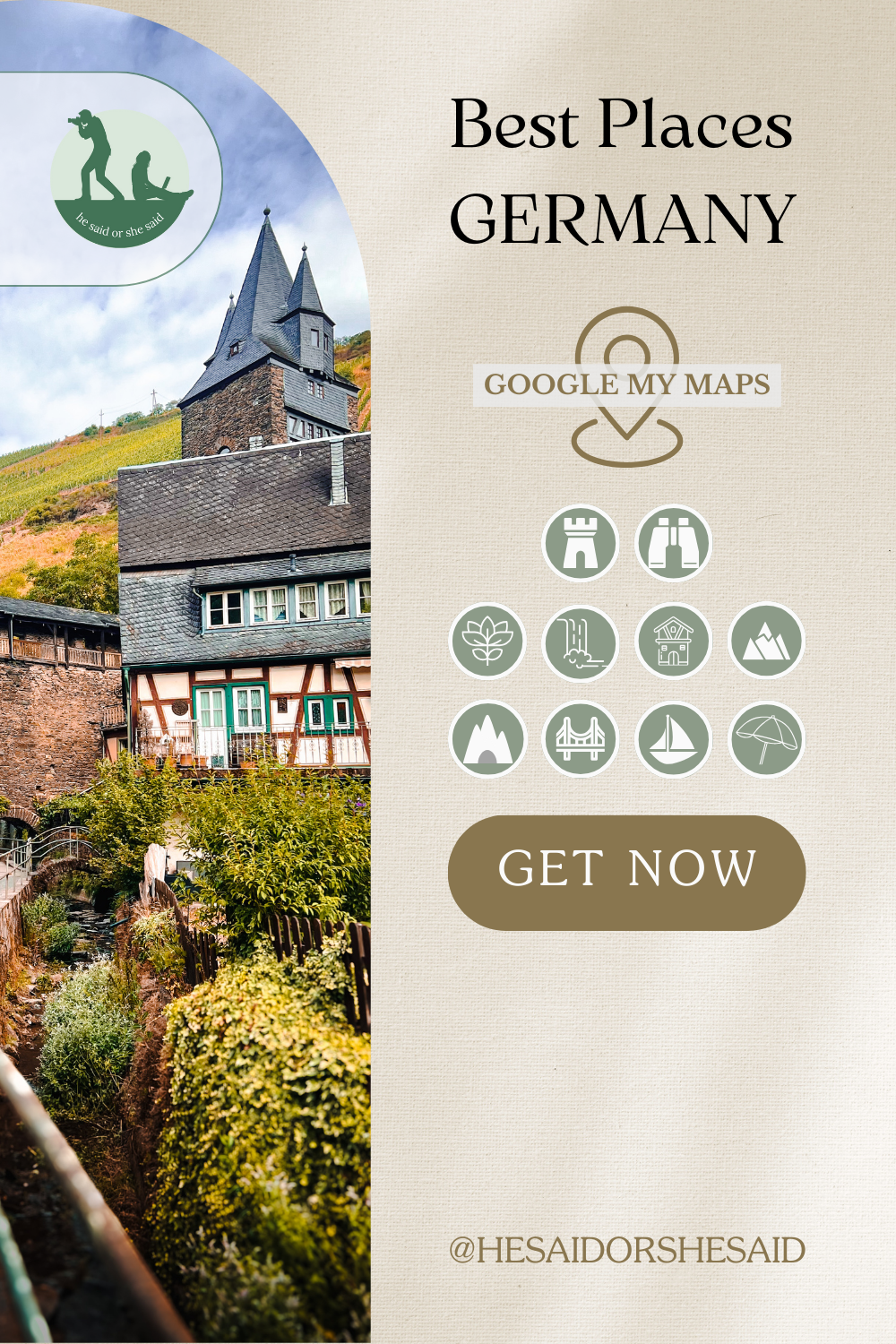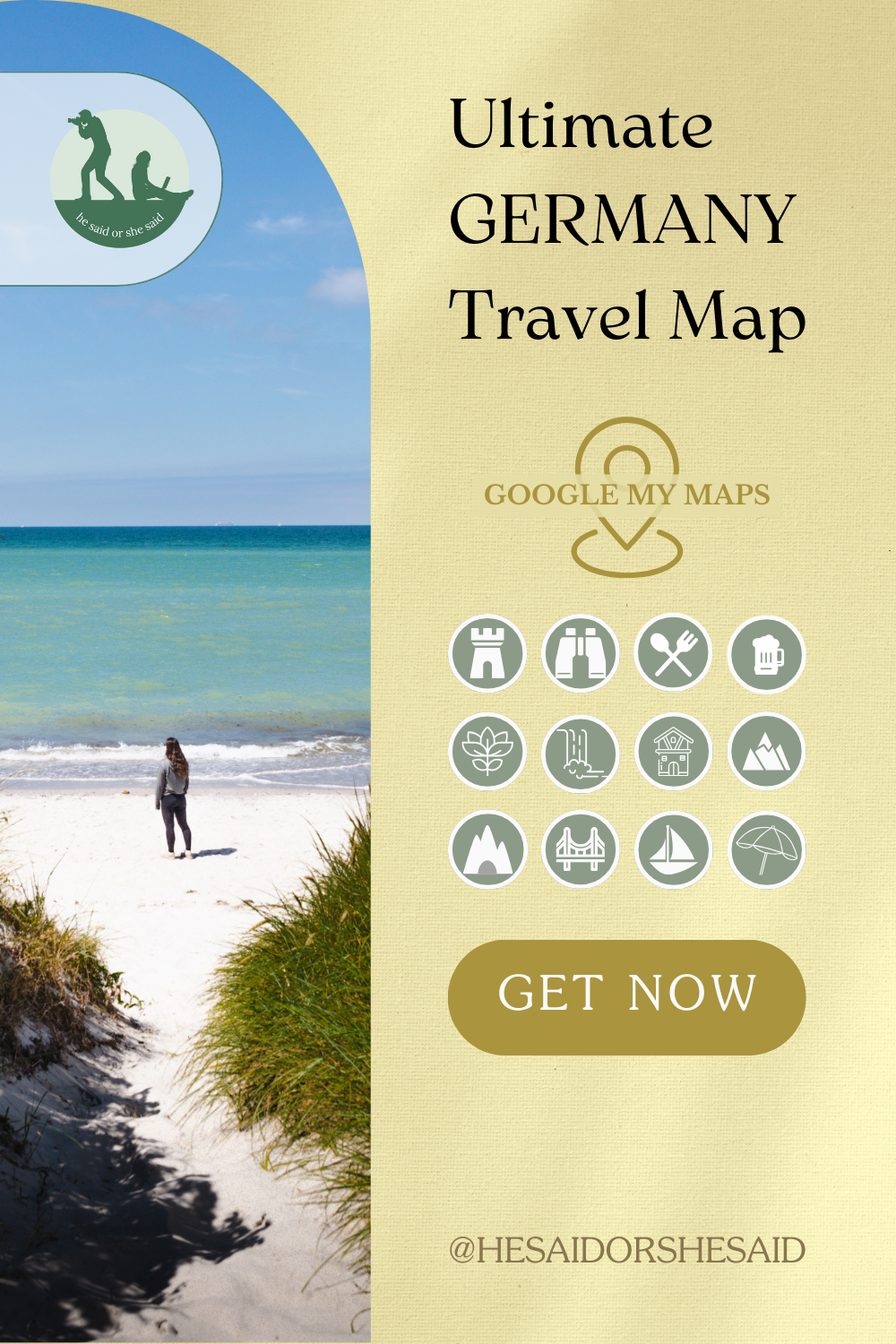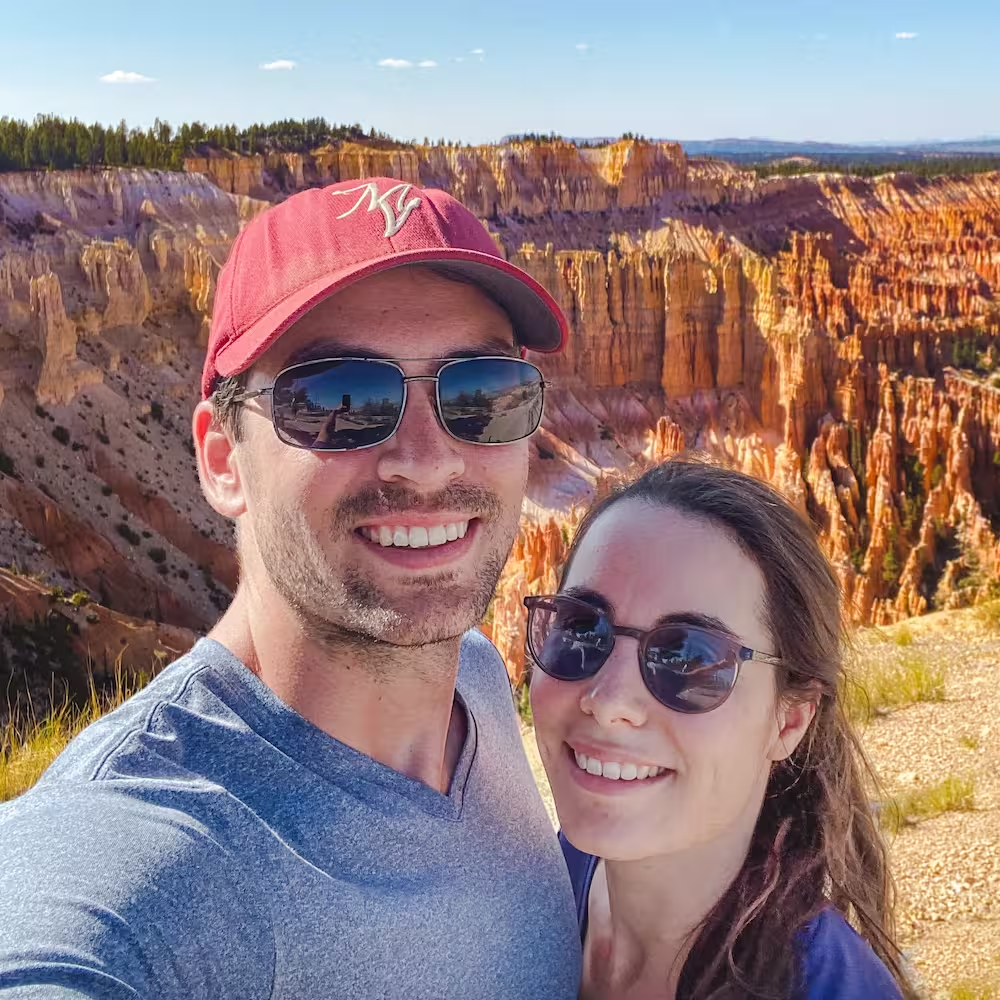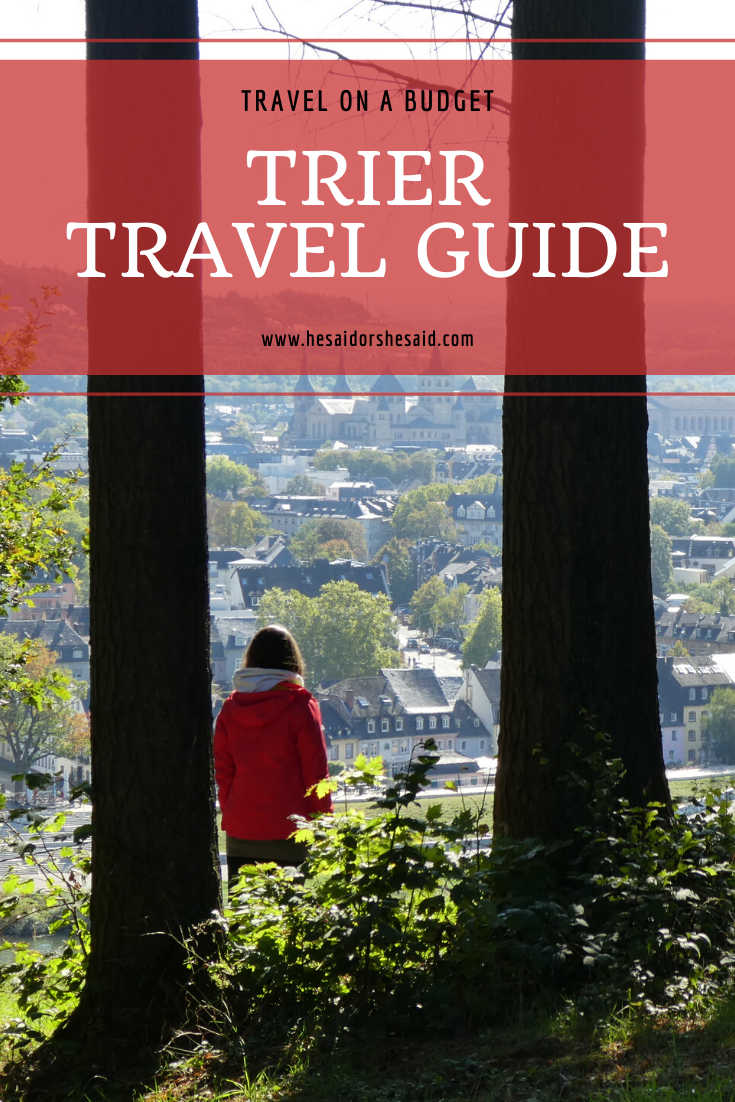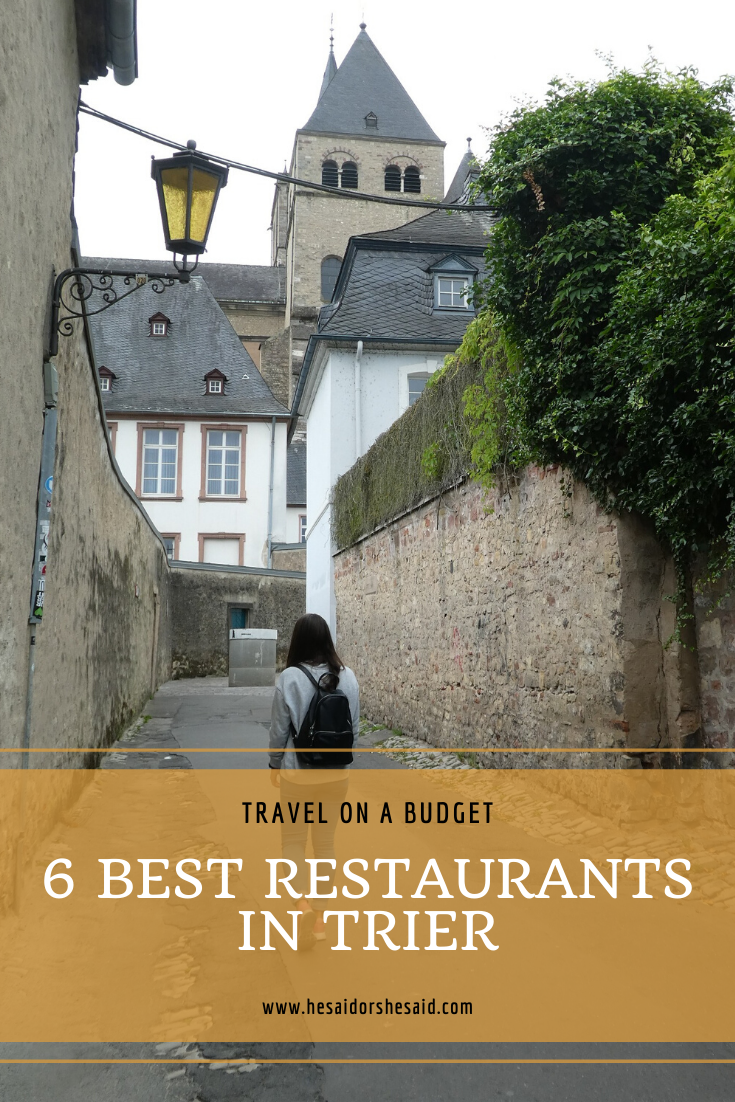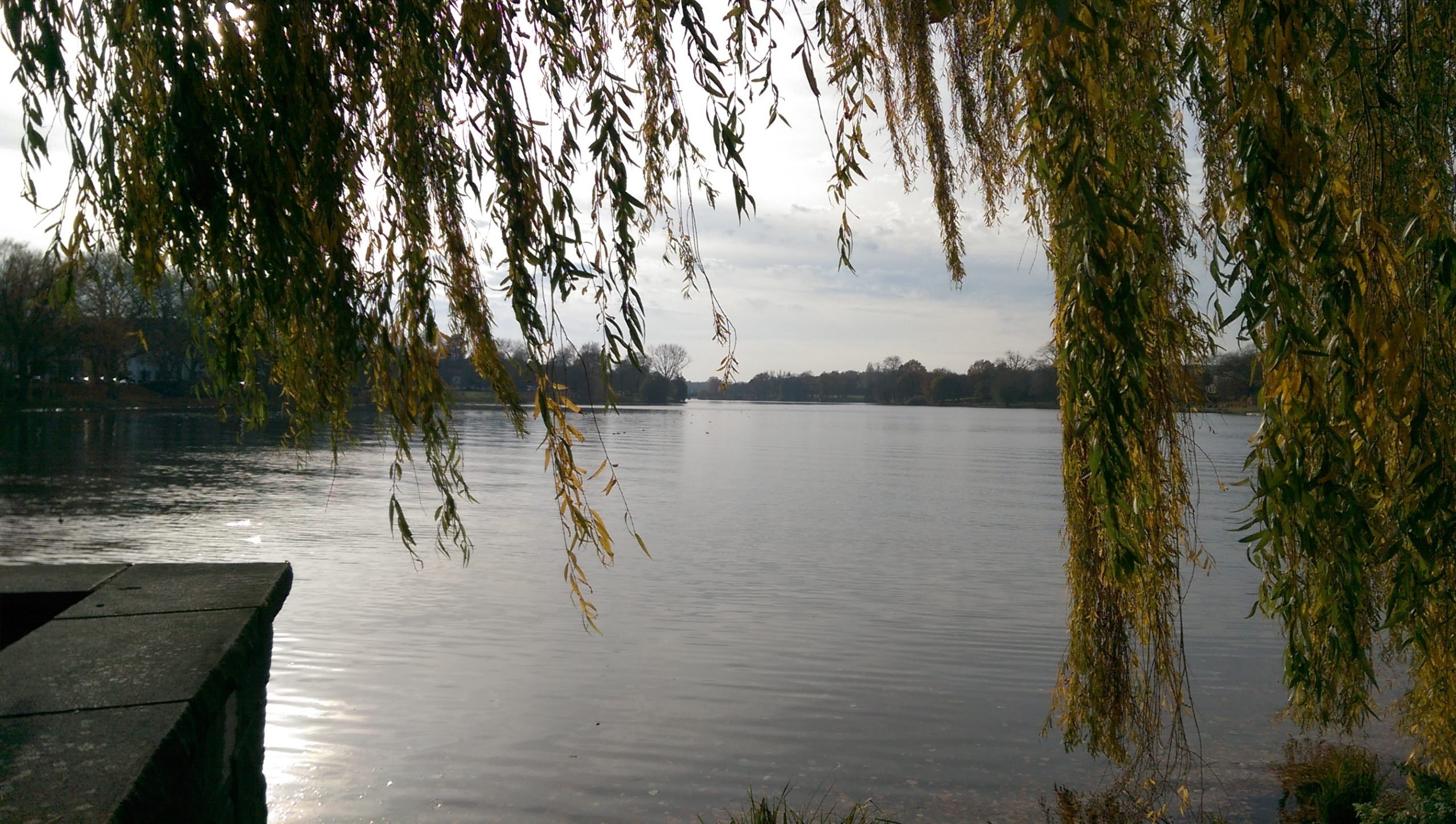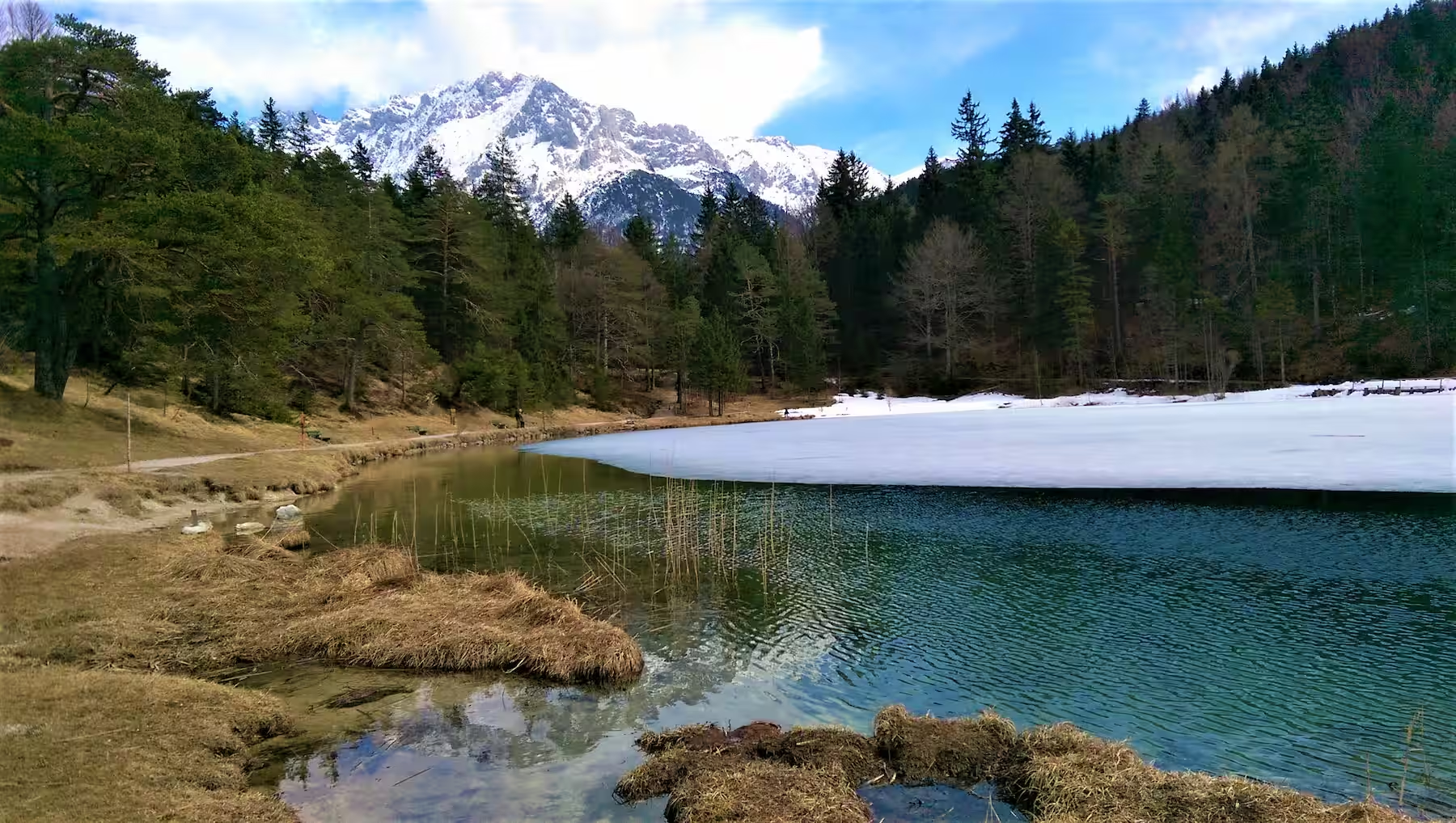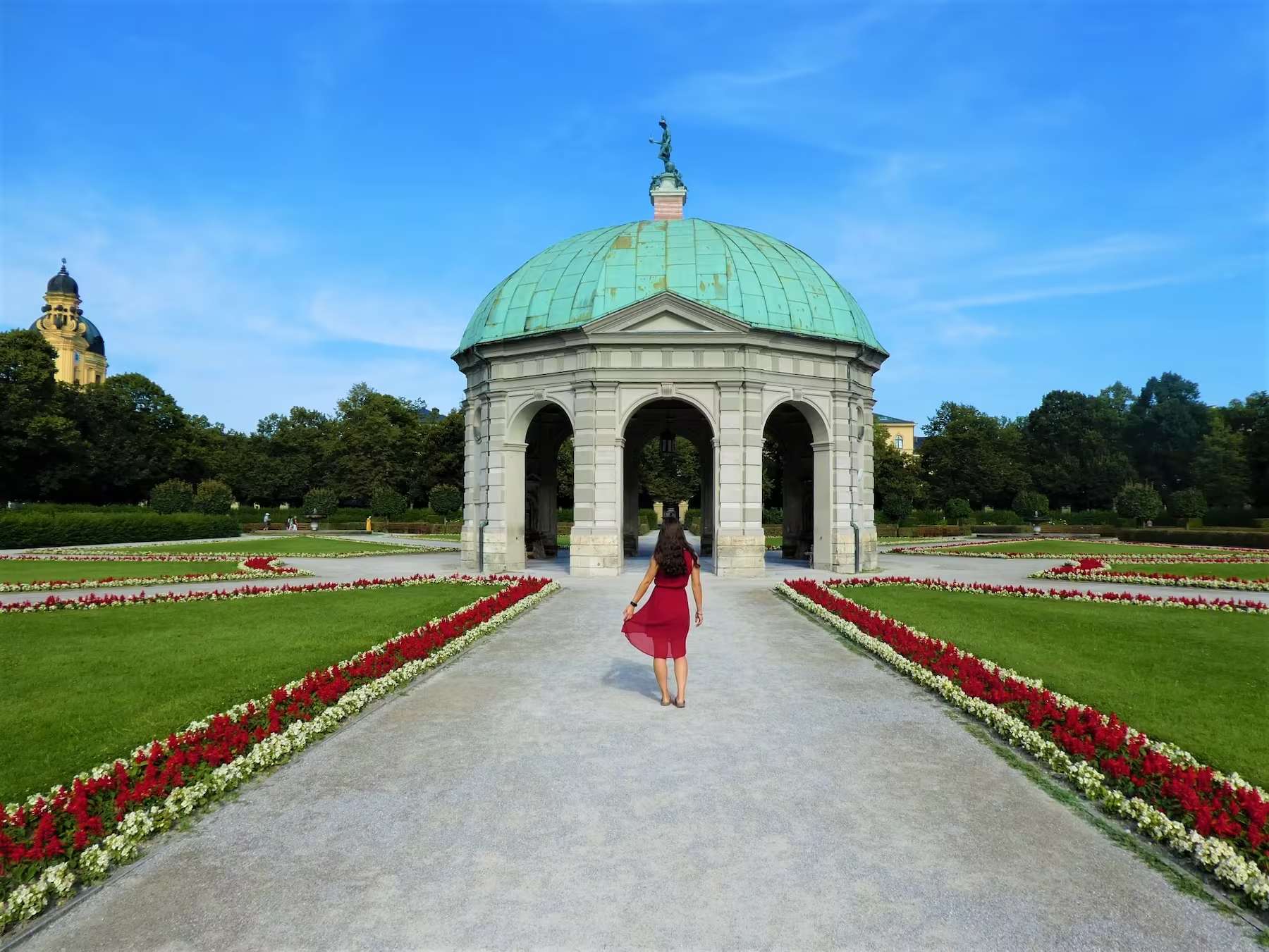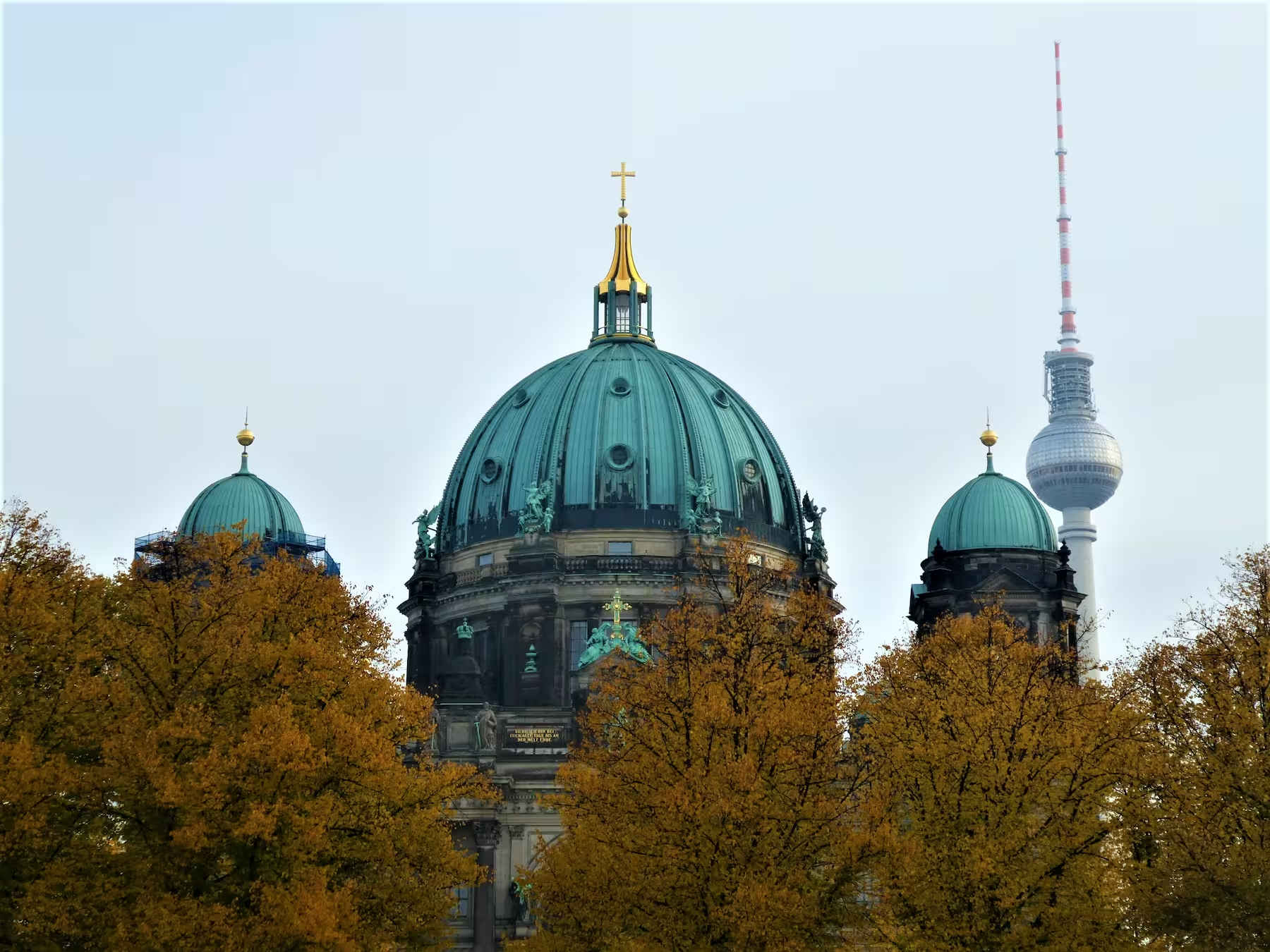Updated: May 6, 2020
Our Perspective on Trier
Trier is a very important city to both of us, as it is where we first met each other. We both have had many valuable experiences in this city, which have helped shape our outlooks on life. But those are stories for another day. Although we no longer live here, we will carry our cherished memories with us everywhere we go. In reading through our tips and tricks, you will notice that there are many things that we both thoroughly enjoy about this famous city on the Mosel river. Such favorites include good restaurants, good wine, great historical sites and hiking trails near Trier.
He Said about Trier
Trier, Germany is a city that will always have a special place in my heart. This is where I came the first time I ever went abroad by myself. The experiences I had here helped change my entire outlook on life. Oh, and I met Denise here. Guess that was pretty cool too. All biases aside, I am really glad I discovered Trier and feel privileged to have lived there for so long. I can safely say that this is one place nobody should discount when considering German destinations. Whether you like nature, cities, culture or wine, Trier has it all. But don’t just take my word for it. Go see it for yourself! 😉
She Said about Trier
Trier has a very special place in my heart due to a few reasons: it‘s where I met Ryne, it‘s where I had a great time studying and it‘s where history, city and nature come together very closely. Trier is a wonderful place to live and to visit in summer as well as in winter! One of the most beautiful Christmas markets is found here in winter whereas colorful mountains and streets greet you in summer. The city bursts of things to do, multiculturalism, events, sights and pristine nature hikes. No wonder it is so popular among every age. I know every corner of this city, so if you have any questions that are not answered by this travel guide, please comment and we will answer straight away.
Trier Travel Tips in this Article
Tips & Tricks for Trier
Since we both lived in Trier for so long, it should be no surprise that we’ve collected a huge amount of insider tips and general knowledge about the area. We’ve hosted many friends and family during our time, so it was obligatory for us to show them around. In that same spirit, we’re going to use our knowledge to take you on a virtual tour of Trier by leading you to the best places to eat, the coolest sights and all of the best things to do. Let’s go!
Food/Restaurants/Wine
Although it’s the oldest city in Germany, food isn’t really one of Trier’s cultural strong suits. Sure, there are a couple of typical Trier dishes, such as “flitten”, but you won’t find amazing German food here (this makes us sad, but that’s just the way it is). That being said, there are still some really good places to eat in Trier and most of them are quite well hidden, which makes it that much more difficult for tourists to catch wind of them (that’s what we’re here for). Here is a list of the six places that we highly recommend; in no particular order:
- The first one is our favorite classic German bar called Cubiculum. It is hidden in one of the side streets called Hosenstrasse (translation: pants street). The bar is tucked in an old stone cellar which creates a unique atmosphere. The food is really cheap and also delicious. They have a specialty called Pizza Salat (pizza salad) which you should definitely try whenever you go there. It’s a combination of homemade pizza topped with a salad of your choice.
Price: €20 for two large meals & two beers - The second one is a tiny Pasta place called Rossini located in the Nagelstrasse. They make fresh homemade pasta every day. It’s definitely the closest thing to real Italian pasta that we have found in Germany. The pasta is super tasty and it’s even a little cheaper than in other restaurants.
Price: more or less €20 for two meals - The best pizza place, in probably the entire country of Germany, is the Pizzeria da Franco in the Palaststrasse in Trier. This is by far the best pizza we’ve ever had in Germany and believe us, we’ve had many. 😉 The owners are from southern Italy and that’s exactly how they cook – with amore!
Price: around €22 for two large pizzas - For burgers, we recommend Der Daddy Burger in the Neustrasse in Trier! The meat as well as the buns they use are super fresh. They only use local products and even get their buns freshly baked from a local bakery every day. It’s super delicious! They even have some amazing vegetarian and vegan options!
Price: between €11 and €15 for a burger meal including a burger, fries and coleslaw. - Love Asian food? So do we. That’s why we had to recommend the outstanding Vietnamese restaurant Yong Yong. Yong Yong is most famous for their delicious soups, but they also offer up delicous plated creations as well. This is hands down the best Vietnamese-inspired cuisine we’ve eaten outside of Vietnam.
Price: Mostly between €12 and €18 per plate. The large bowl of Coconut Curry soup (our favorite) costs around €14. - When it’s time to start your day, there’s no better way than with breakfast at the Krämerie. This is a French-style deli that also serves up decadent meals and fine platters. You’ll want to make a reservation. Otherwise you won’t get a table!
Price: We usually spent around €30+ for two people. - The last one isn’t a restaurant, but it’s definitely our favorite Döner (Kebab) in town. You can find it in the Kaufland (a grocery store) in the Aachenerstrasse. It may seem like a weird location for a place like that, but the Döner is absolutely delicious. The portions are huge and you can choose from a variety of sauces. The staff is really nice and sometimes they give you samples of the various dips they make while you’re waiting for your food. Vegan and vegetarian options available (just ask!).
Price: At the time, it was €4.50 for a huge and delicious kebab wrap
Wine, Riesling to be Exact
No matter where you live in the world, if you’ve ever ventured into the wine section of a liquor store or supermarket, you’ve undoubtedly come across Riesling wine. If you’ve ever wondered where that wine comes from, there’s a very high likelihood that it originated right here on the Mosel. Trier is very well known for wine because it is the largest city in the Mosel Valley. The Mosel Valley offers the ideal conditions and climate for growing Riesling grapes. In fact, if you take any train ride through this region, you will see mountains all around you covered in vineyards and these are all specifically farmed for wine production. In fact, each vineyard you see most likely belongs to a specific family-owned winery. Very few of these grapes are actually sold to larger producers. There are numerous little villages on the Mosel where you can have an authentic wine tasting experience, but if you don’t have time to venture outside of Trier, then don’t worry. The wine culture is very much alive and well in the city. You can try local wines at almost any restaurant, or you can even go to local wineries, wine bars, wine restaurants (a “Weinstube” is a restaurant built around its self-produced wines) or even one of the many wine festivals. If you don’t try wine while you’re in Trier, then you didn’t really visit Trier.
The Wine Stand
You have to go to the wine stand while you’re in Trier. The wine stand is located right in the middle of the main square (Hauptmarkt) and it is always packed—and for good reason, too! Every week, a different local winery takes over operation to showcase their wines. The prices are also greatly reduced compared to restaurants or bars, giving you the opportunity to try some amazing wine without forking out a wad of cash to do so. We are sad to say that we didn’t actually try the wine stand until our last year living in Trier, which was disappointing. So take it from us and don’t miss out! P.S. They open at 11 am. 😉
Transportation
You don’t need to take a bus or car in order to see and visit all points of interest. Trier is a small town and all sights are reachable by foot. Most of them are located in the city center. Only the Amphitheater and Barbarathermen are outside of the pedestrian zone, but still only minutes away from the center.
Moreover, it is easy to get to Trier by train or bus. All nearby airports (e.g. Frankfurt Hahn, Frankfurt am Main, Luxemburg Findel etc.) have shuttles to the city of Trier or you can take the train. Remember that there is only one train company in Germany, the Deutsche Bahn. So, book on their website for the best deals. It’s also best to make an account because then you can use the app to store all of your trips and travel information. Trier’s train station is only a 10 minute walk from the city center, meaning that you don’t need a car. However, if you really don’t feel like walking, there are buses all over the city that will take you almost anywhere for around €3.00.
Things to Do
People who live in Trier often complain that there’s “nothing to do”, but that’s actually not true at all. It can feel that way if you’ve already done everything, but people visiting Trier will most certainly be spoiled for choice. There’s history, culture, nature and mixtures of all three.
Hiking Near Trier
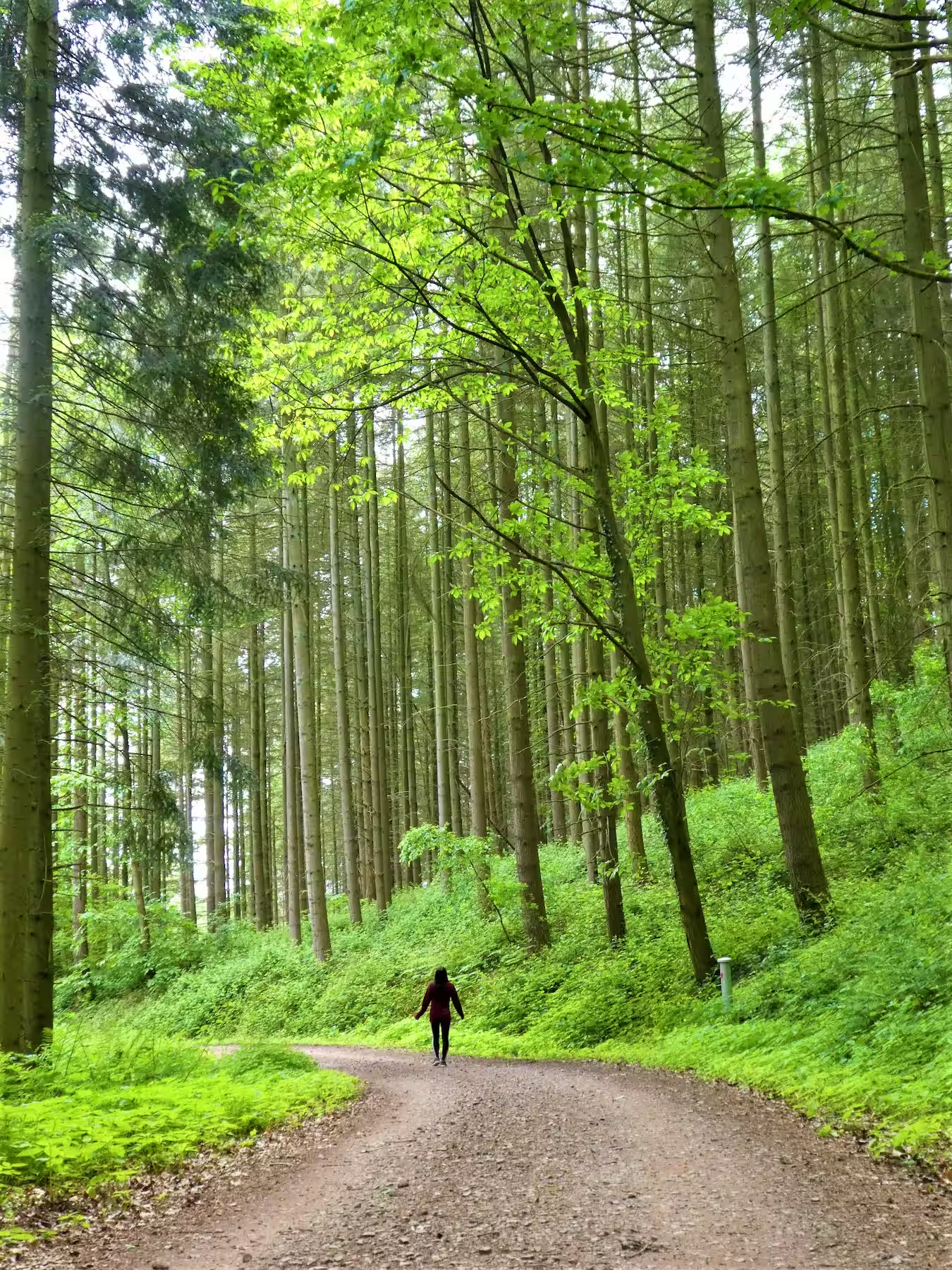

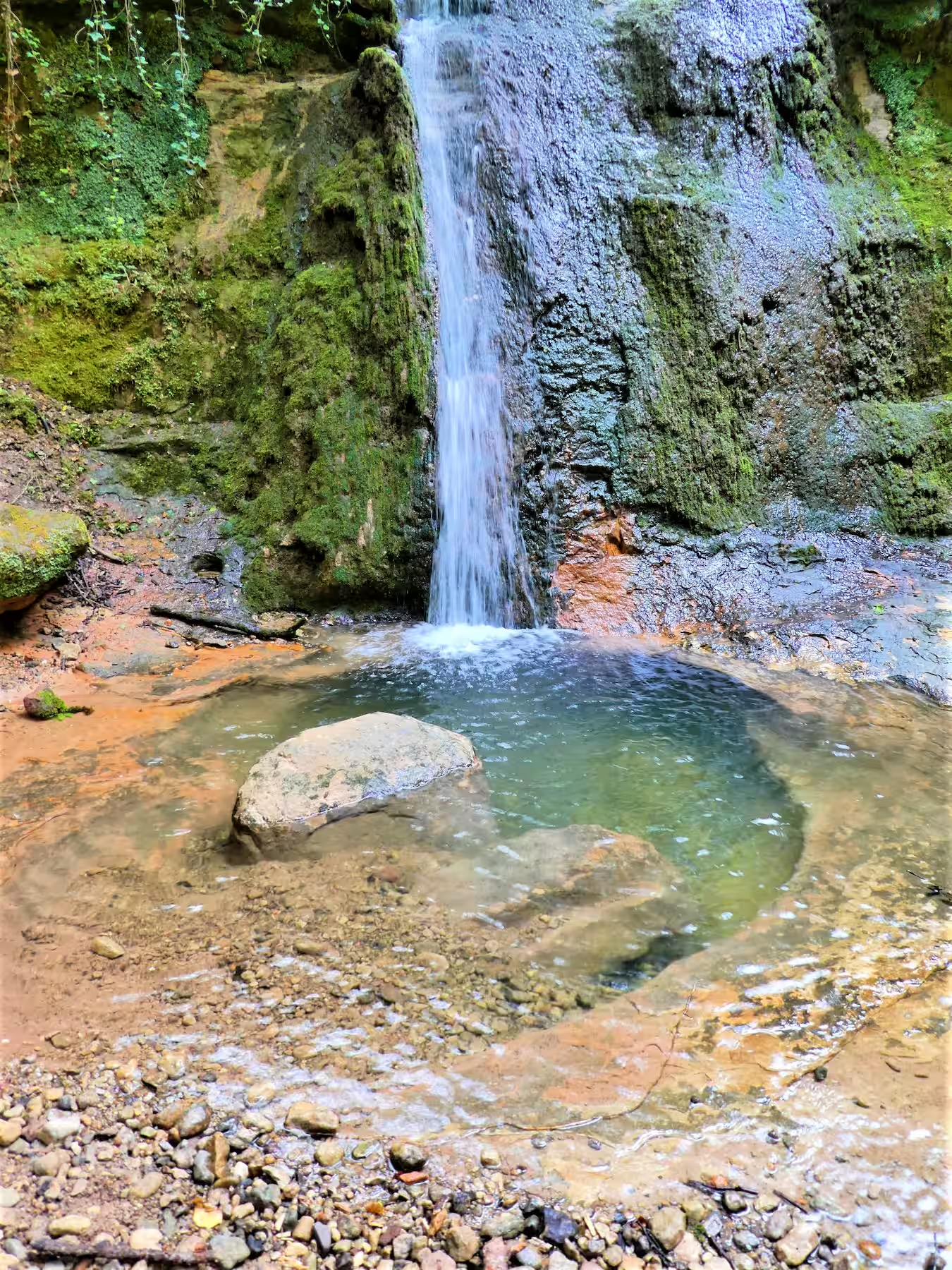

One of our favorite pastimes when we lived in Trier was hiking. We lived there for a total of 5-6 years, so it goes without saying that we’ve already hiked most of the nearby trails. One of the coolest things about Trier is that you can go from bustling city life to silent nature within minutes. There are many places where you wouldn’t even know you were close to a city if you had came from the other direction. To keep things simple, especially if you’re on limited time, we’ve decided to list our top 4 hiking trails around Trier:
- We especially liked the Eifelsteig from Kordel to Trier, which is really long but takes you to some nice places such as the Rammstein castle. Total length: ~19 km
- Another trail that we would like to recommend is the Felsenpfad which is part of the Moselsteig. It leads you over the red cliffs next to the Mosel river in Trier. The view along the way is unique since it allows you to look over Trier the entire the way. Total length: ~1-8 km (depending on how much you want to do)
- The Galgenkopftour is known as a “dream loop” which is a term used to describe the best hiking trails in Germany. It will give you many scenic overlooks of the city of Trier as well as the surrounding areas.Total length: ~16 km
- Moreover, there are several hiking trails that lead to the Sirzenicher Bach. It’s a beautiful, well-hidden place in the middle of the woods with a pretty waterfall. Total length: ~3-10 km (depending on how much you want to do)
Points of Interest in Trier
There is so much to see here! Here’s a handy little list of all the points of interest in Trier and what it is that makes each of them so interesting.
- Petrisberg: Walk up among the vineyards and enjoy fantastic views of the city and even the country of Luxemburg. We loved watching the sunset from here!
- Mariensäule: Walk up here for an even better view of Trier. You can see the entire city and river very clearly. Great for photos!
- Kaiserthermen: Ancient royal Roman baths. The entire are is massive and quite well preserved. Renovations are constantly underway in various sections, but these don’t take away from the experience.
- Porta Nigra: One of the ancient gates to the city and probably Trier’s most iconic structure. For a few Euros, you can even go inside, walk on the ramparts and visit the attached museum.
- Roman Bridge: This is the oldest bridge in the entire country and it was built by the Romans who first conquered this land. The bridge is still standing and we were fortunate enough to live right next to it for many years.
- Amphitheater: The name says it all. This was where the ancient Romans entertained themselves with various shows and gladiator battles.
- Barbarathermen: These are more recently unearthed thermal baths near the river. The Romans really loved bathing, huh?
- Karl Marx birth home: Trier is often also referred to as the Karl Marx city; not because they’re all communists (they’re not), but because Karl Marx was born here. You can visit his birth home and an attached museum in the Karl Marx street (of course).
- Luxemburg tower: This is a small tower located on a hill near the university. It’s called the Luxemburg tower because you can see the country of Luxemburg from here. You can either walk here from Petrisberg or you can take a bus.
- City center: The historic city center is simply gorgeous. Cobblestone streets and traditional German facades give you the authentic feel you’re looking for when walking through a historic German city. The town is especially beautiful during the Christmas markets in December.
- Cathedral: The massive cathedral is hard to miss. If you’re into this type of architecture or churches in general, then you can take a 30 second walk from the town square and even go inside for free.
- Basilica: Not to be confused with the cathedral, the basilica was the caesar’s church, built specifically for him. You can either go inside or view it from the outside on your way to the palace garden.
- Palace garden: The palace was connected to the basilica and right out front of this eye-catching pink building face, you have a beautiful, well-maintained garden with sculptures, grape vines, lovely flowers and even a fountain or two. This is the perfect place for relaxing in the afternoon sun.
- Red cliffs: Towering over the mosel, the red cliffs are another iconic symbol of Trier. If you don’t feel like walking on the cliffs, you can take them in from one of the many riverside restaurants on the Zurlaubener riverbank.
- Roman cranes: While walking along the river, you will come across many ancient cranes that the Romans used to load and unload freighters traveling on the river. It’s truly incredible that these have stood the test of time.
- Mosel: Last, but not least, another of the most iconic symbols of Trier. Take a walk or ride your bike along the Mosel. There are plenty of benches and grassy areas where you can have a nice picnic and enjoy the soothing effect of the flowing river. If you’re really into cycling, then you will be pleased to know that there is a gorgeous 550 km cycling route that runs alongside the Mosel.
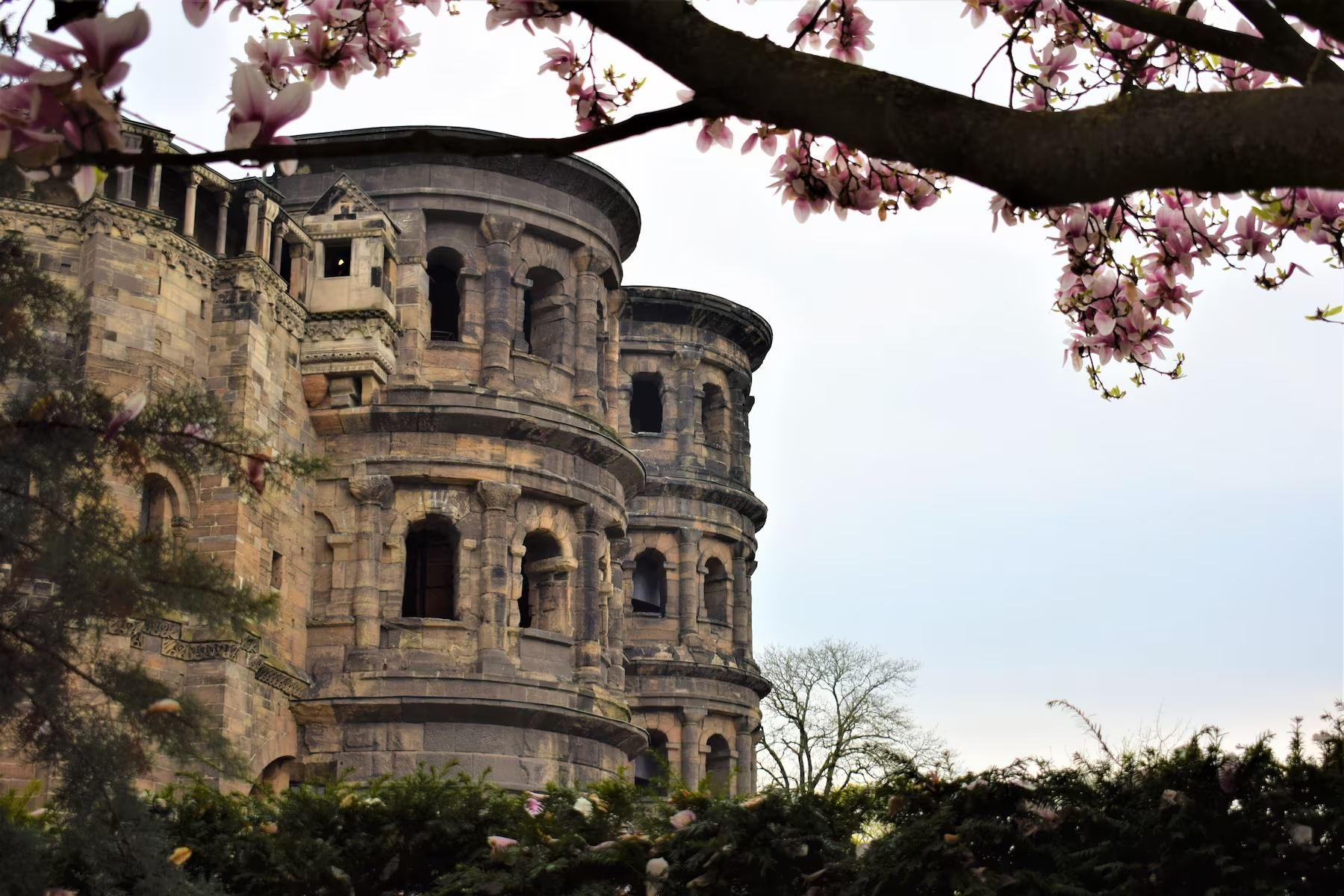
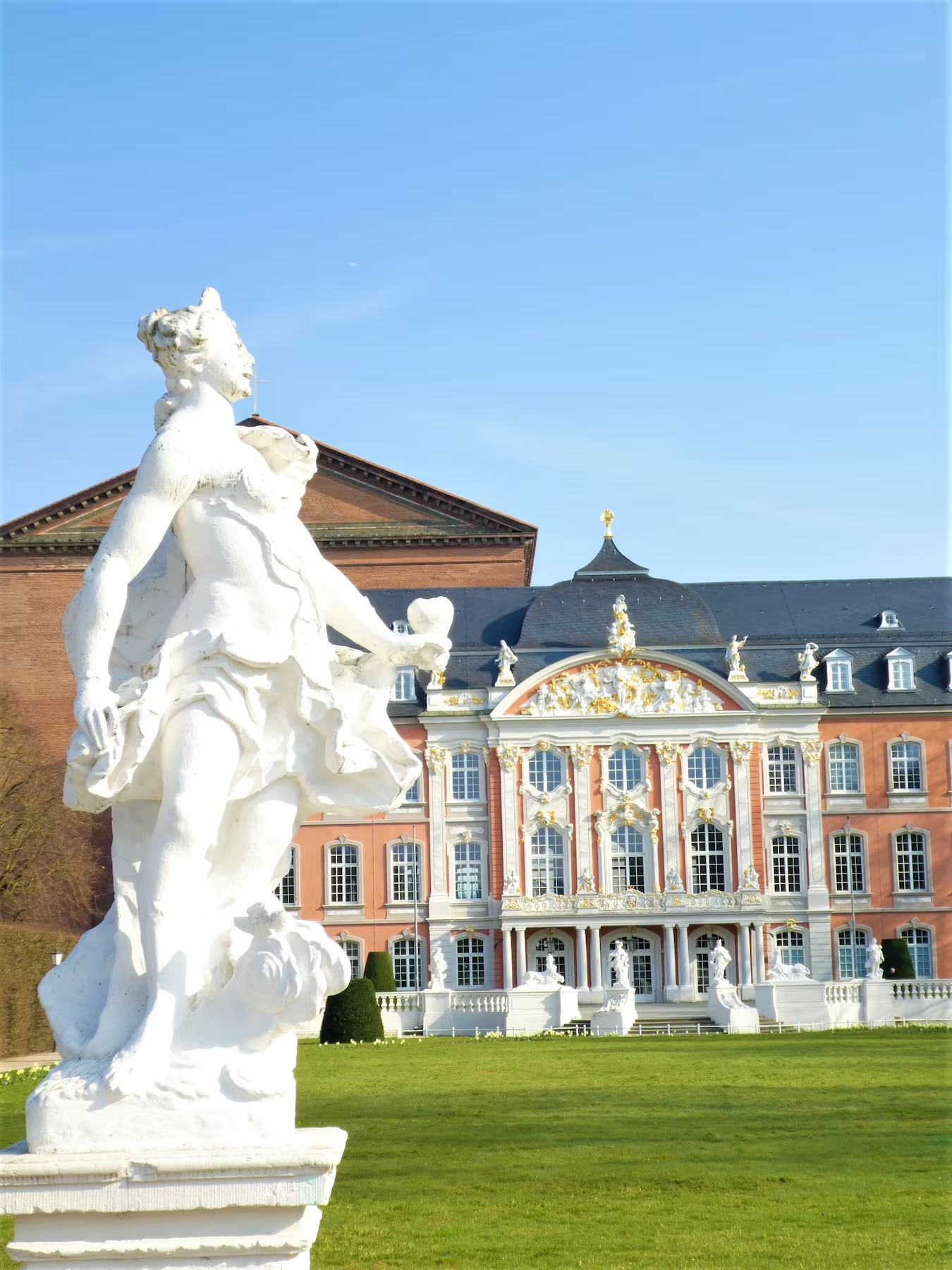

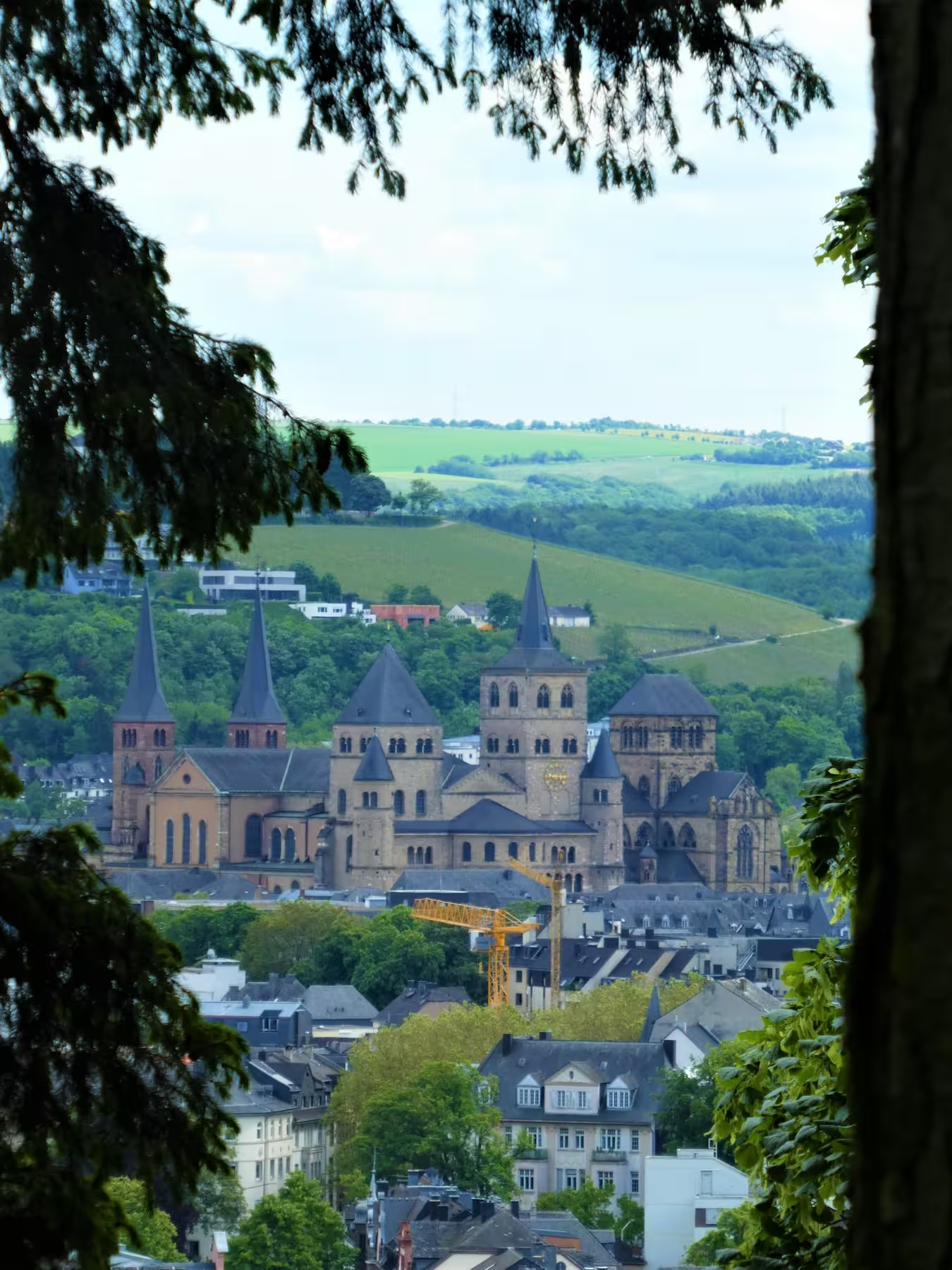
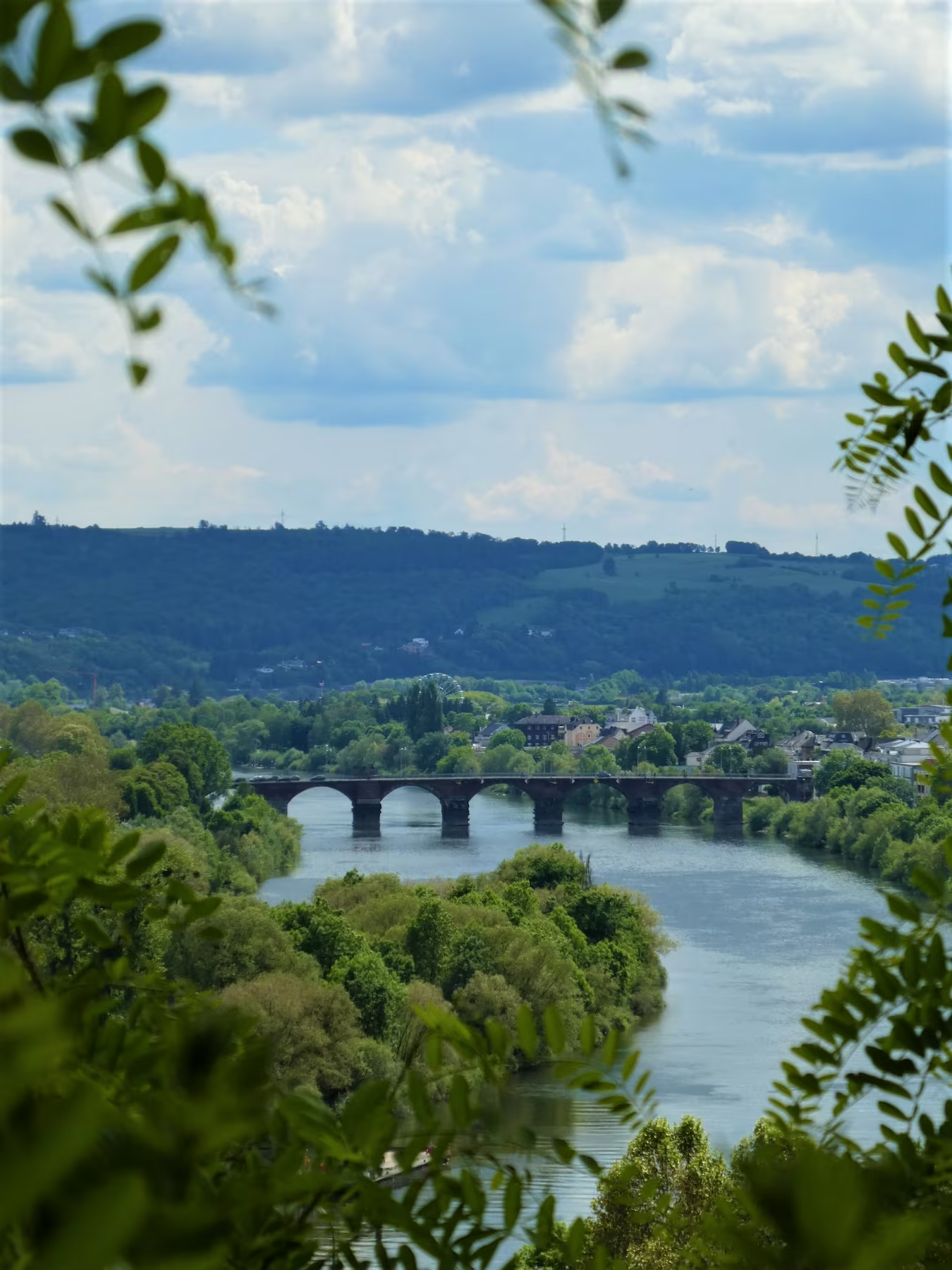
Tours in Trier | A Rich History
It’s worth taking a guided tour since Trier has so much history to offer. You simply won’t get enough information if you do a self-guided tour. There are numerous tours from which you can choose and we don’t have one that is particularly better than the others, so it’s up to you as to which one you choose to take. Naturally, these tours are offered in various languages, so it won’t be hard to find one with a quick Google search. Even if you can’t afford a tour or don’t have time for one, you will still quickly find yourself immersed in a combination of ancient Roman and “less-ancient” German architecture. You can use the above points of interest as a general guide for everything you need to see.
Bonus Activity: For the Kids
Animal lovers rejoice! Trier has an animal park for wild animals that are native to the region, which you can feed, pet and just watch roam around their huge enclosures. The animal park is located in the woods behind the famous red cliffs we talked about earlier. You can get there by walking, driving or taking a bus up to the Fachhochschule and following the signs for the “Wildgehege”. Here are just a few of our friendly furry friends. 🙂
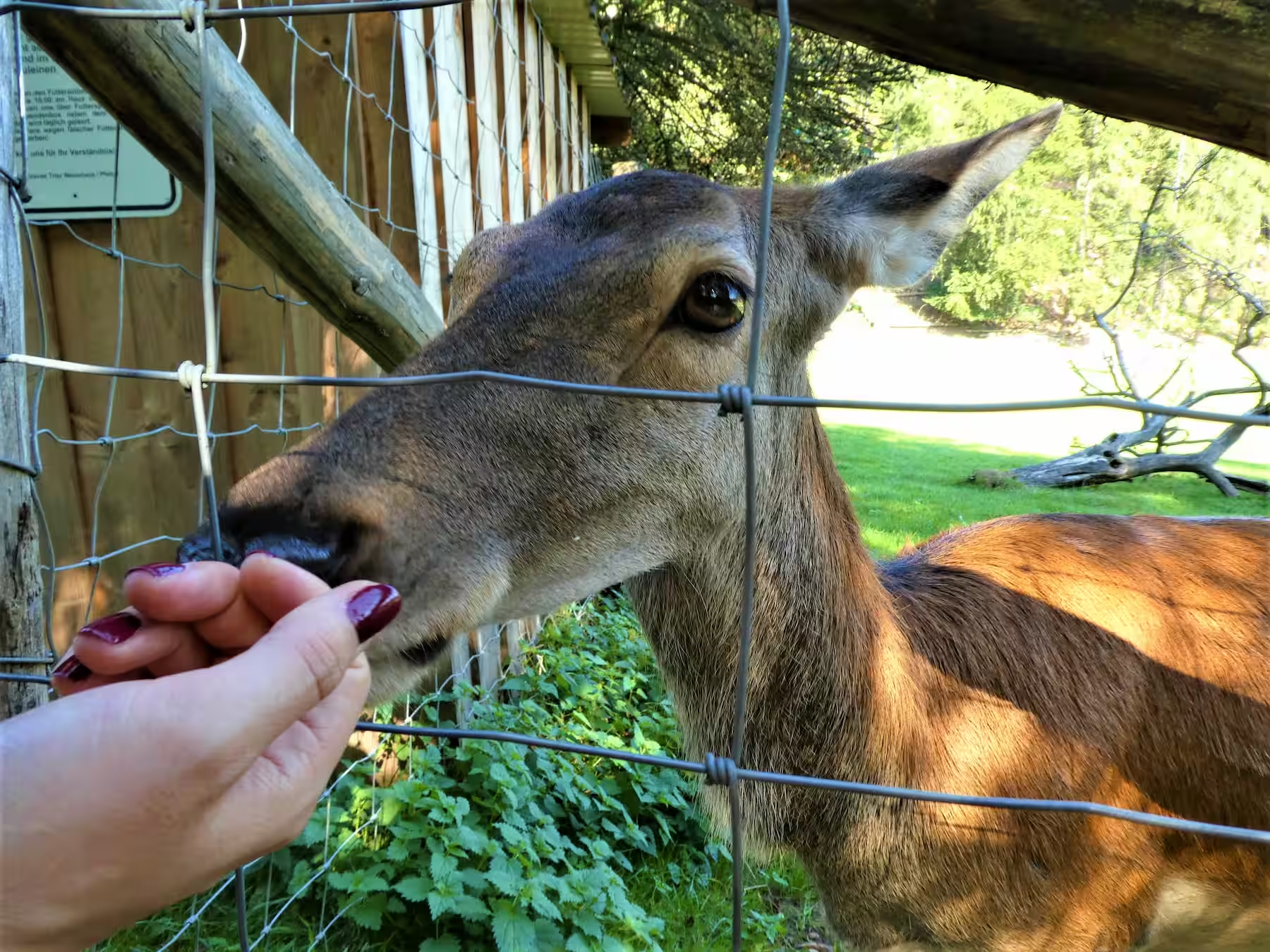
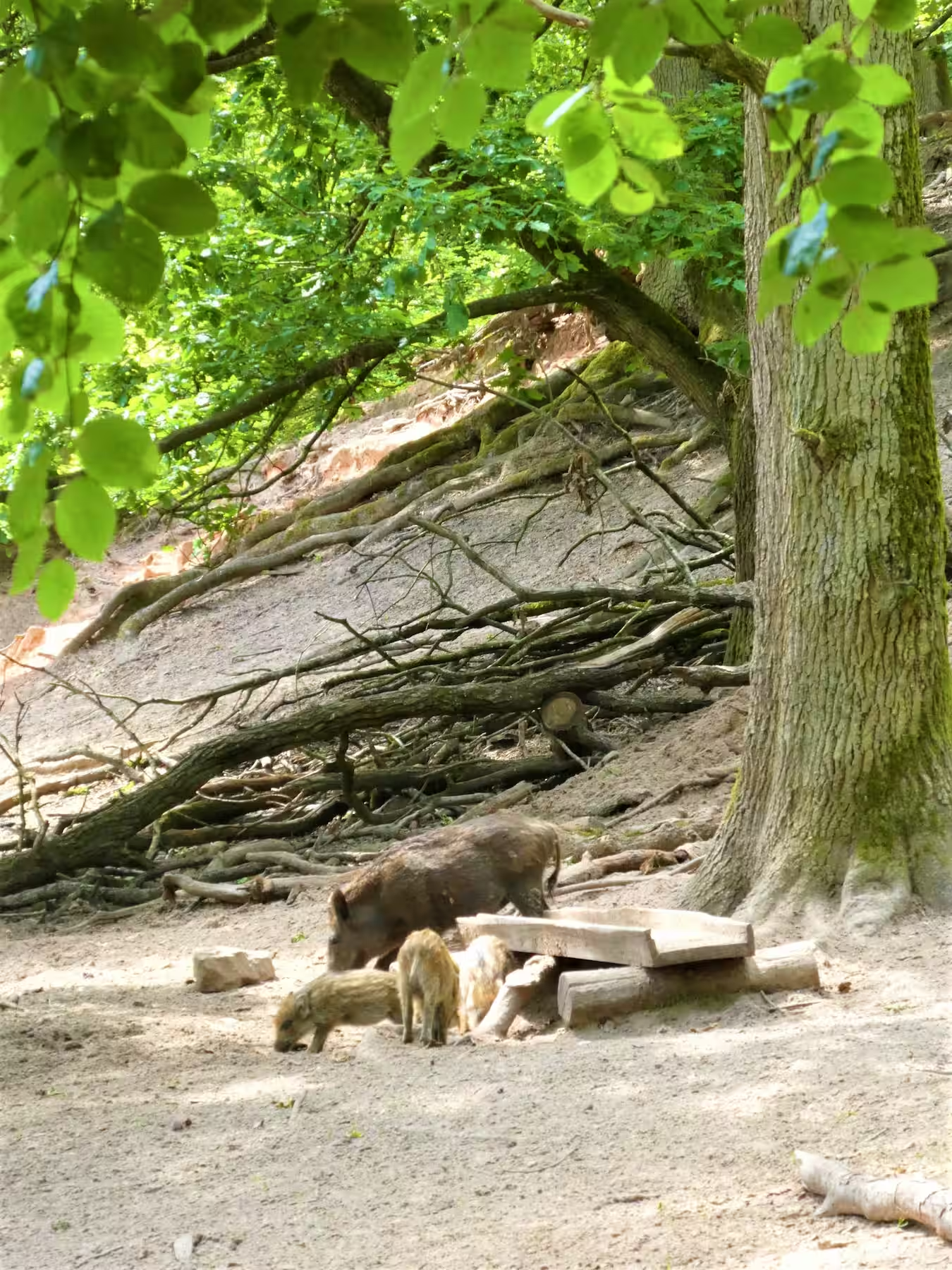

Trier Facts and History
Trier is the oldest city in the entire country of Germany and therefore is home to some of the oldest standing structures including the Porta Nigra (Black Gate), which is likely the most famous landmark in all of the German wine country. In addition to the Porta Nigra, Trier is also home to seven other Unesco world heritage sites. Trier was originally built by the Romans, during their conquest of Europe around 15 BCE. Trier remained in control of the Romans for 400 years or so before switching multiple hands after that time.
As with many German cities, Trier suffered extensive damage during World War II and undetonated bombs are still being found, today. In addition to war artifacts, ancient artifacts and structures are constantly being dug up; consequently halting any prior construction that was to be done in the area. In fact, a location that was once a parking lot during his first stay in Trier, was shortly turned into a construction zone before the discovery of Roman ruins lying beneath. Although the area is not yet open to the public, it will very likely become the next historical marker among the many to be found in Trier.
Because of the extensive history, Trier hosts countless tourists year-round. However, historical landmarks are not the only interesting things to be found. Trier is also home to some of the finest wineries and vineyards in Europe, where world famous Riesling wine grapes are grown and fermented. From here, travelers have many options for working their way up the Mosel and stopping by the many other enchanting towns and villages found in the Eifel region.
Book Your Trip to Germany
Please accept cookies and reload the page to use our booking tool. 🙂
Did you know? You can support us for free when you book an accommodation through our booking forms and links.
